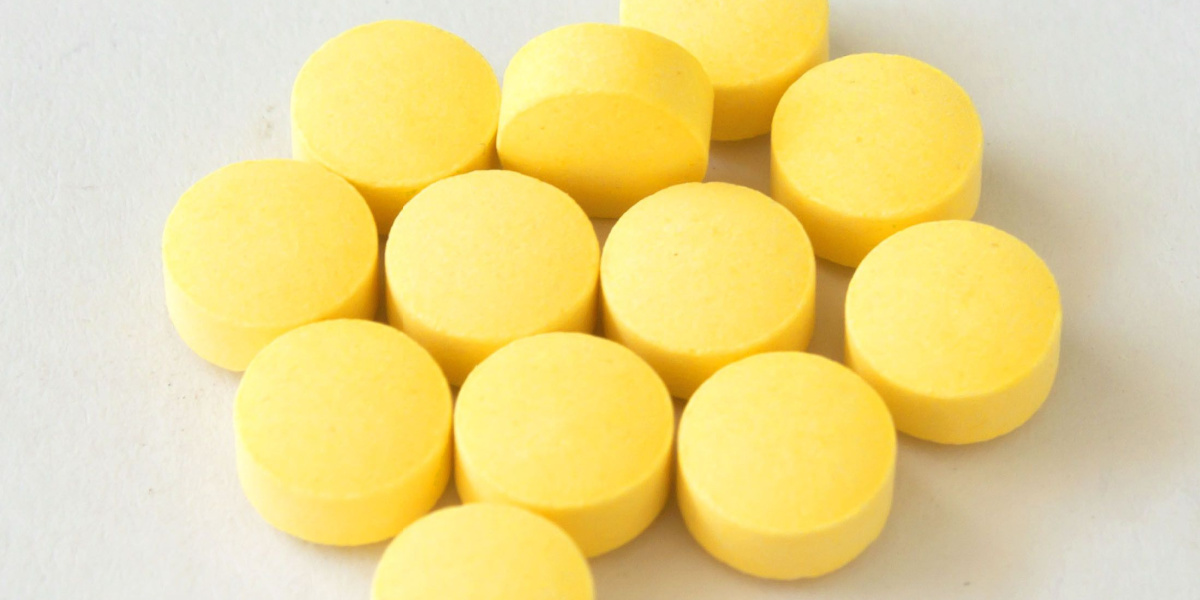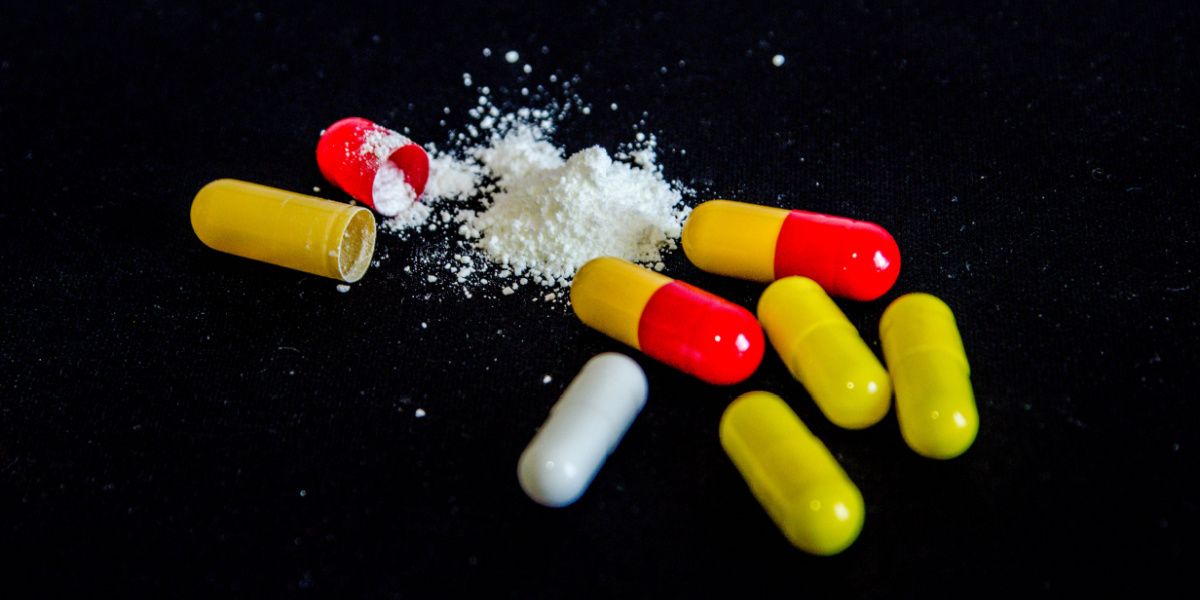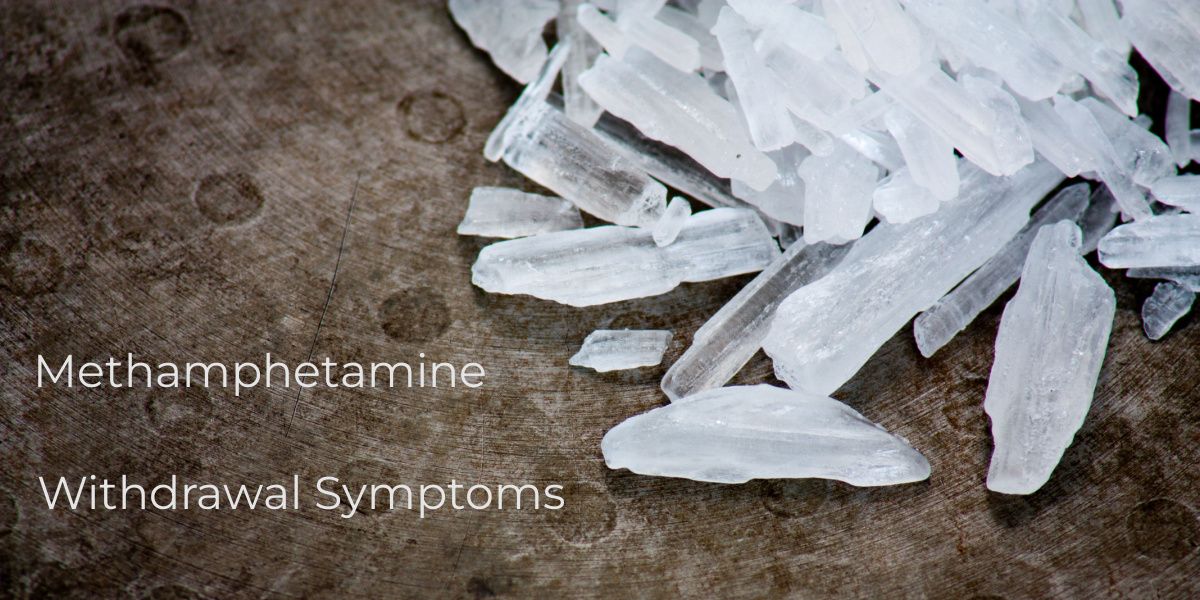Amphetamine is a Schedule II controlled substance, due to its potential for abuse and dependence. Because of its stimulant and euphoric effects, amphetamine is widely abused, and it can cause withdrawal symptoms when stopped. [1][2][3]
The term ‘amphetamines’ refers to a group of substances, including amphetamine, dextroamphetamine, and methamphetamine. They share many similar properties and effects but differ slightly. [1]

Does amphetamine cause withdrawal symptoms?
Amphetamine is a substance that is prescribed to treat conditions such as ADHD and narcolepsy. It is also used illicitly, as a recreational or performance-enhancing drug. Amphetamine causes a stimulant effect, boosting energy levels and increasing concentration. It also creates a feeling of euphoria or ‘high’. [2]
Individuals who stop taking prescribed or illicit amphetamine are likely to experience withdrawal symptoms, particularly if they stop abruptly. Therefore, a gradual dose reduction is recommended when ceasing amphetamine use. [1]
Amphetamine is prescribed to treat conditions such as ADHD, narcolepsy, and eating disorders. It is also often abused due to its effects, as it increases energy and alertness and creates a feeling of euphoria. [2]
Heavy or prolonged use of amphetamine can contribute to the development of tolerance and dependence. This can lead to individuals requiring larger or more frequent doses to achieve the same effects and prevent unpleasant symptoms. If dependence develops, it is common to experience withdrawal symptoms when stopping stimulant use, as the effects of amphetamines wear off. [3][4]
Amphetamine affects neurotransmitter levels and activity, including dopamine, norepinephrine, and serotonin. Dopamine is the primary neurotransmitter involved in the brain’s reward circuit. Increased levels contribute to feelings of pleasure or euphoria, which reinforces amphetamine use. Norepinephrine contributes to increased alertness and energy. Serotonin impacts several functions, including mood, appetite, and sleep. [1][2]
When amphetamine use is stopped, the body must adapt to the lack of medication and change in neurotransmitter effects. This can cause the onset of unpleasant mental and physical withdrawal symptoms. [1]
Amphetamine withdrawal symptoms
Amphetamine withdrawal symptoms can vary from person to person and may be more severe in those with heavy or prolonged amphetamine use. [5]
Common amphetamine withdrawal symptoms
Common amphetamine withdrawal symptoms include: [1][2][3][6]
- Fatigue
- Weakness
- Increased need for sleep
- Low mood
- Irritability
- Reduced ability to feel pleasure
- Insomnia
- Vivid dreams or nightmares
- Cravings
- Increased hunger and appetite
- Agitation
- Restlessness
- Slowed movements
- Muscle aches and pains
- Difficulty concentrating
- Cognitive impairments
- Social impairments
- Shivering
- Headaches
- Nausea and vomiting
Severe amphetamine withdrawal symptoms
Severe amphetamine withdrawal symptoms include: [1][2][6]
- Psychotic symptoms: Including delusions, hallucinations, and paranoia. This may be more likely in individuals with a history of psychotic symptoms.
- Extreme mood changes: Such as severe depression or anxiety
- Suicidal ideation: Some people experience new or worsening suicidal thoughts and may act on these thoughts.
Amphetamine withdrawal timeline
Withdrawal symptoms often emerge within 24 hours of the last amphetamine dose. [5]
Initially, individuals are likely to experience what is known as a ‘crash’. This can last from two days to a week. During this time, symptoms emerge such as excessive tiredness, a sudden increase in hunger, and extreme mood changes. Typically, withdrawal symptoms are at their most severe during this period and will reduce in severity within a week. [1][3]
Following this, withdrawal symptoms continue for several days to several weeks but then decrease in severity. However, some individuals may continue to experience issues such as sleep disturbances or suicidal thoughts. Typically, withdrawal symptoms are alleviated within three weeks. [2]
However, some people may experience certain withdrawal symptoms for several months or even years, known as post-acute withdrawal symptoms. Withdrawal symptoms may be more persistent or severe following heavy or prolonged amphetamine use. [2][5]
Amphetamine cessation timeline
It is recommended when reducing and stopping amphetamine use to gradually taper off the medication. A gradual reduction in dosage can help prevent withdrawal symptoms, relapse, and worsening of preexisting conditions. [1][3][7]
Tapering off amphetamine could take several weeks or months, depending on the individual’s response. For example, if they experience severe withdrawal symptoms with a dosage reduction, the taper can be slowed, reversed, or paused, to allow for withdrawal symptoms to reduce. [6][7]
Some people may experience little or no withdrawal symptoms, particularly if they have been using small doses for a short period and have not developed a dependence. In this case, they may be able to stop amphetamine use quickly. In contrast, someone using large doses for a prolonged period may need to reduce their daily dosage more slowly. [3][5]
Is amphetamine safe to withdraw from at home?
It may be safe for some people to withdraw from amphetamine at home, although this can depend on the duration or amount of amphetamine use. For some people, it may not be suitable to withdraw at home, as they may be at higher risk of severe symptoms. [1][7]
If an individual wishes to withdraw from amphetamine at home, it is recommended to gradually reduce the dosage over several weeks, as this can help reduce withdrawal symptoms. During this time, it may be beneficial to consult with a doctor to receive professional support and monitor for any concerning withdrawal symptoms. [6]
Similarly, individuals can receive support from their loved ones during this process, who can ensure emotional and practical needs are met. Friends and family can also help monitor for any severe withdrawal symptoms that require professional intervention, such as suicidal thoughts and attempts. [2]
In many cases, inpatient or outpatient treatment programs can provide the required support for safe amphetamine withdrawal, to manage symptoms, cravings, and physical and mental health needs. If individuals wish to withdraw from amphetamine at home, they should first seek professional advice on how to manage this safely. [6]
Amphetamine detox treatment
Withdrawal symptoms often begin within 24 hours of the last amphetamine dose, so treatment should be commenced immediately. This can be provided by professionals at an inpatient treatment program, such as a detox or rehab facility, or through outpatient treatment. Detox treatment often lasts around two weeks, although ongoing treatment can last longer to support the recovery process. [1][6]
Amphetamine detox treatment may include: [1][2][4][6]
- Medication: Although there are no approved medications for amphetamine dependence or withdrawal, various medications can be used short-term to help stabilize neurotransmitters and reduce certain withdrawal symptoms. This can include antidepressants, particularly mirtazapine, to manage low mood and anxiety; benzodiazepines to manage irritability, aggression, and sleep disturbances; and antipsychotics to manage irritability, agitation, and psychotic symptoms.
- Therapy: Therapeutic interventions, such as cognitive behavioral therapy (CBT), can be helpful during or following amphetamine detox. CBT can help alter addictive behaviors, manage emotional and physical withdrawal symptoms, treat underlying mental health conditions, and teach coping skills for emotional distress or triggers. In addition, ongoing therapy can help with cravings and relapse prevention throughout the recovery process.
- Holistic approaches: During amphetamine withdrawal, individuals often experience extreme changes in appetite and sleep. Holistic treatments, such as nutritional counseling, exercise, and mindfulness, can help reduce the impact of this and improve the recovery process.
Often, people benefit from ongoing treatment following amphetamine detox, to support the recovery process and maintain abstinence. This can include psychotherapy, psychosocial interventions, 12-step programs, positive reinforcement or motivational approaches, and support groups. [2][6]




